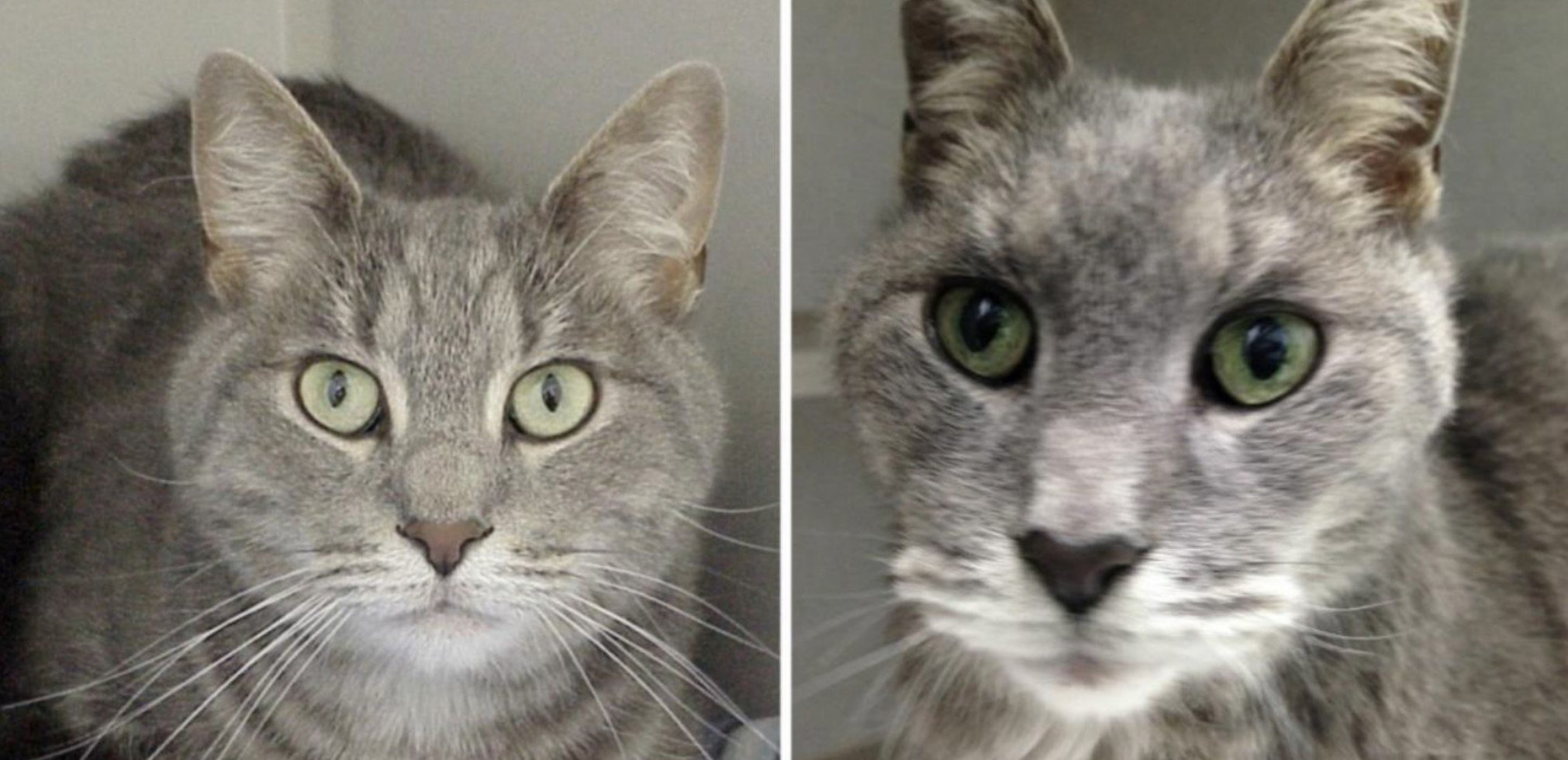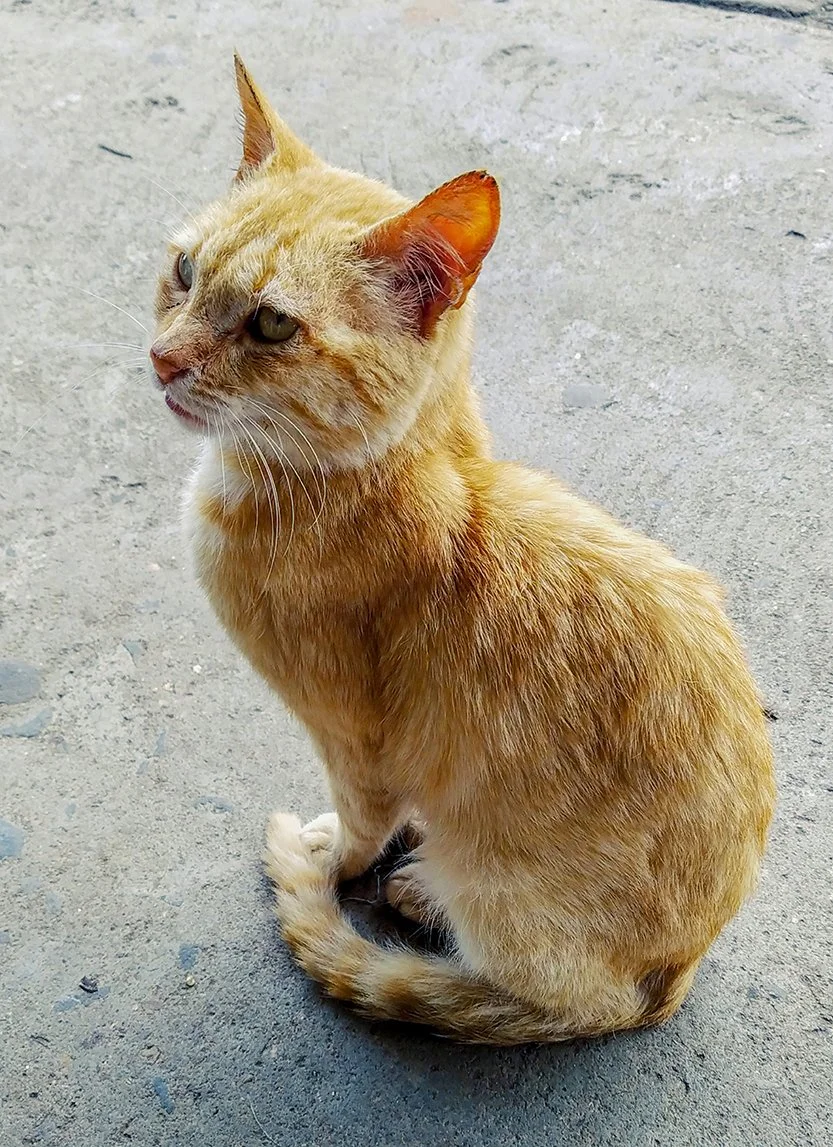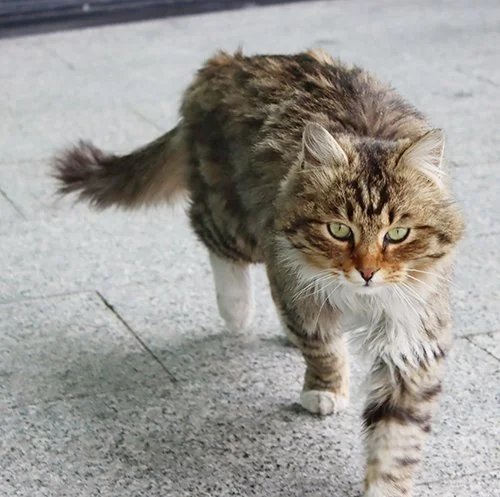Feline Hyperthyroidism
Hyperthyroidism occurs in approximately 10% of feline patients over 10 years of age. It is a disease caused by a tumour in the thyroid gland (nearly always a benign tumour) which secretes excess thyroid hormone into the blood stream. This in turn, causes an over-active metabolism and puts extra stress on the heart, digestive tract and kidneys.
Clinical signs of feline hyperthyroidism may include one or more of the following:
Weight loss despite normal or increased appetite
Increased urination
Increased drinking
Increased vocalisation
Restlessness and increased activity
Vomiting/Diarrhoea
Poor hair coat/unkempt fur
Diagnosis
During the physical exam, your vet may discover an increased heart rate and breathing rate, high blood pressure, an enlarged thyroid gland and loss of muscle mass.
Blood testing can reveal an elevation in thyroid hormone.
Hyperthyroidism can occur along with other medical conditions and a comprehensive screening of your cat’s heart, kidneys and other organ systems is always advisable.
Treatment options
Untreated hyperthyroidism can cause heart failure, high blood pressure (leading to blindness) and kidney dysfunction, which is why it is important to provide treatment for this condition. Your cat, when suffering from untreated hyperthyroidism, will feel very unwell and unsettled.
Radioactive Iodine Therapy (I-131)
This treatment is available in specialist treatment centres. A small dose of radioactive Iodine is administered by tablet or injection, which destroys the diseased tissue but spares the normal functioning cells. This is a potentially curative treatment and currently the gold standard therapy for suitable cases, although some cats may relapse in the future.
Medical therapy
Anti-thyroid tablets or topical gel act by blocking the excessive production of the thyroid hormone. This treatment is given for a short time before being booked for I-131 treatment, to allow us to evaluate the cat’s kidney function.
Some owners choose to continue with this line of treatment for the rest of the cat’s life, instead of I-131. The advantages of medical therapy are a lower initial cost, it is readily available and requires no hospitalisation. The treatment success is regularly monitored with blood tests.
Disadvantages include the need for lifelong medication and monitoring and a potential for adverse drug effects (uncommon).
Surgical therapy
Surgery can be performed to remove some or all of the thyroid gland. This involves an anaesthetic and potentially can damage the parathyroid gland which controls calcium levels in the body, so we perform it only in rare cases, where other options are not suitable.
Nutritional Therapy
A special diet has been formulated that restricts iodine content to control the production of thyroid hormone. This can be an effective option if your cat is exclusively inside and has absolutely no access to any other food.
Prognosis
Regardless of which treatment option you choose, your cat can have a great quality of life for many years.
The goals of therapy are to restore normal thyroid function and to have your cat feeling and behaving normally again.
Ongoing monitoring of your cat on medical therapy and checking for the development of a decline in other organ function is very important.



